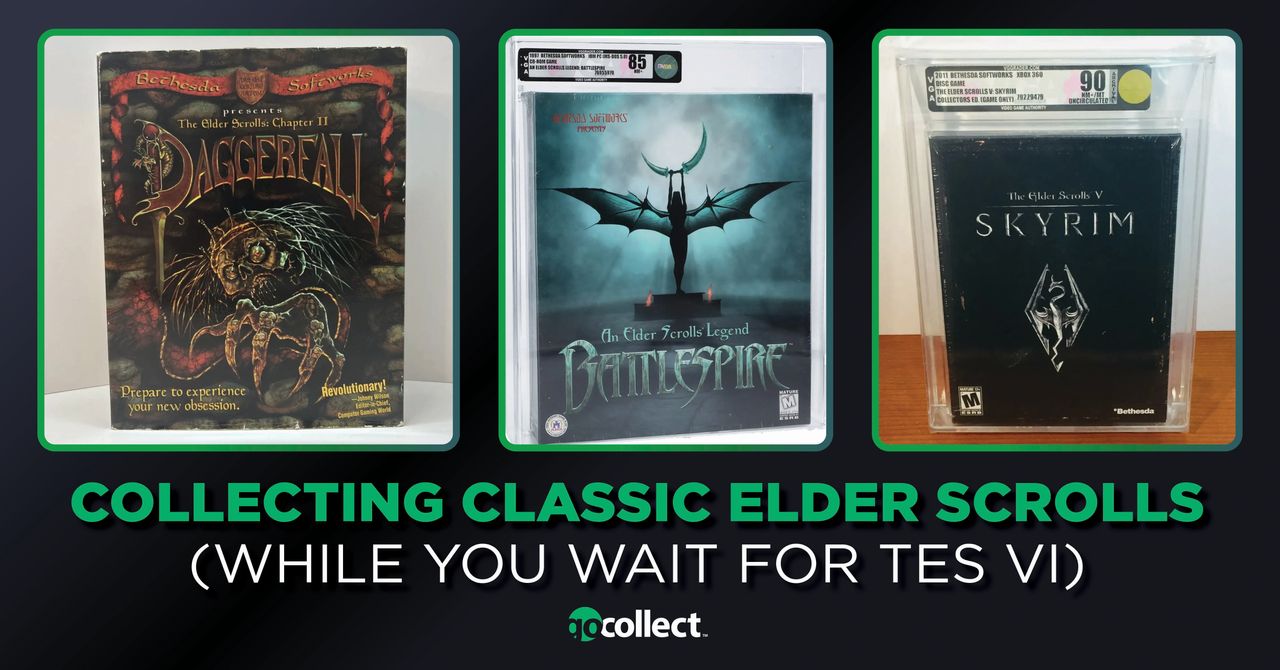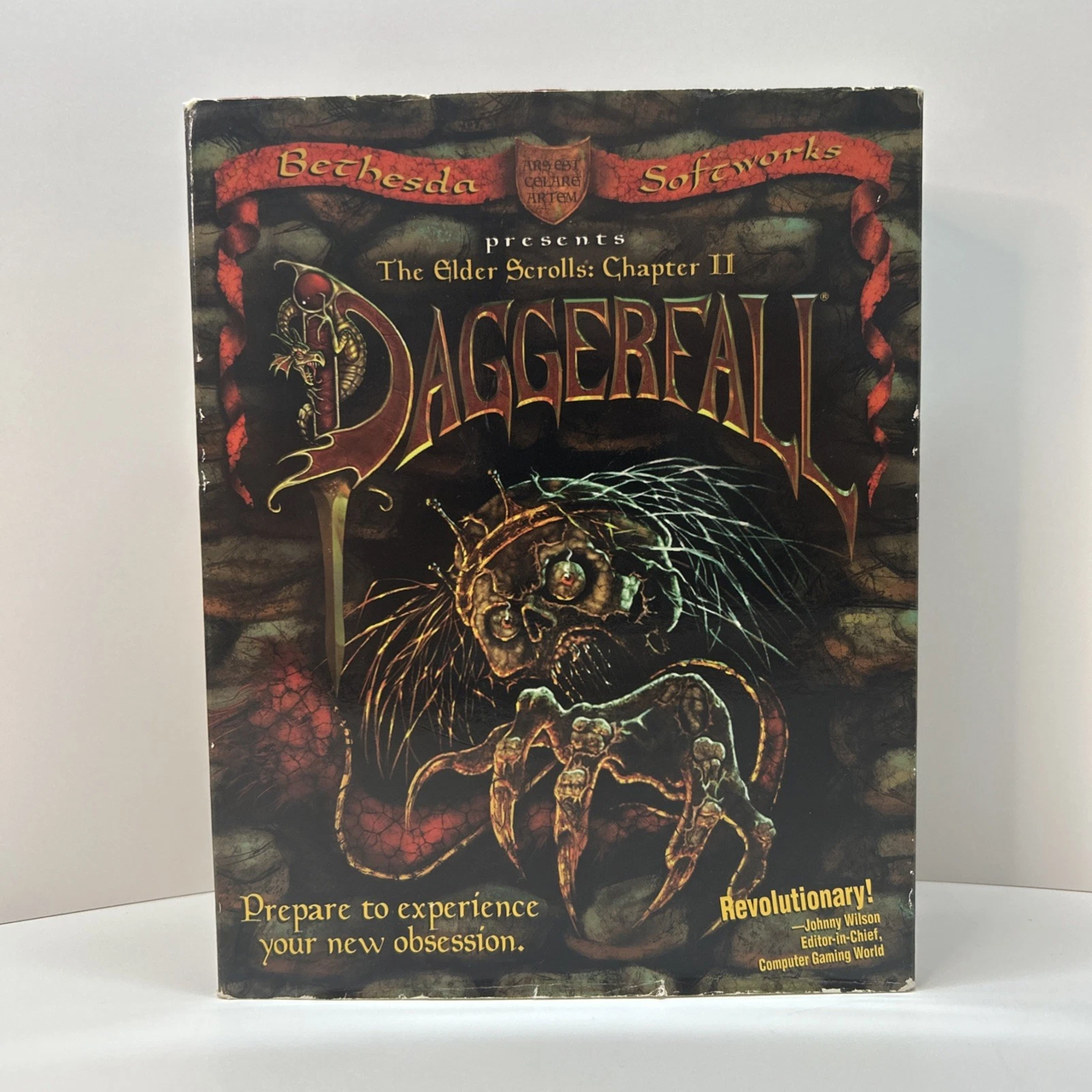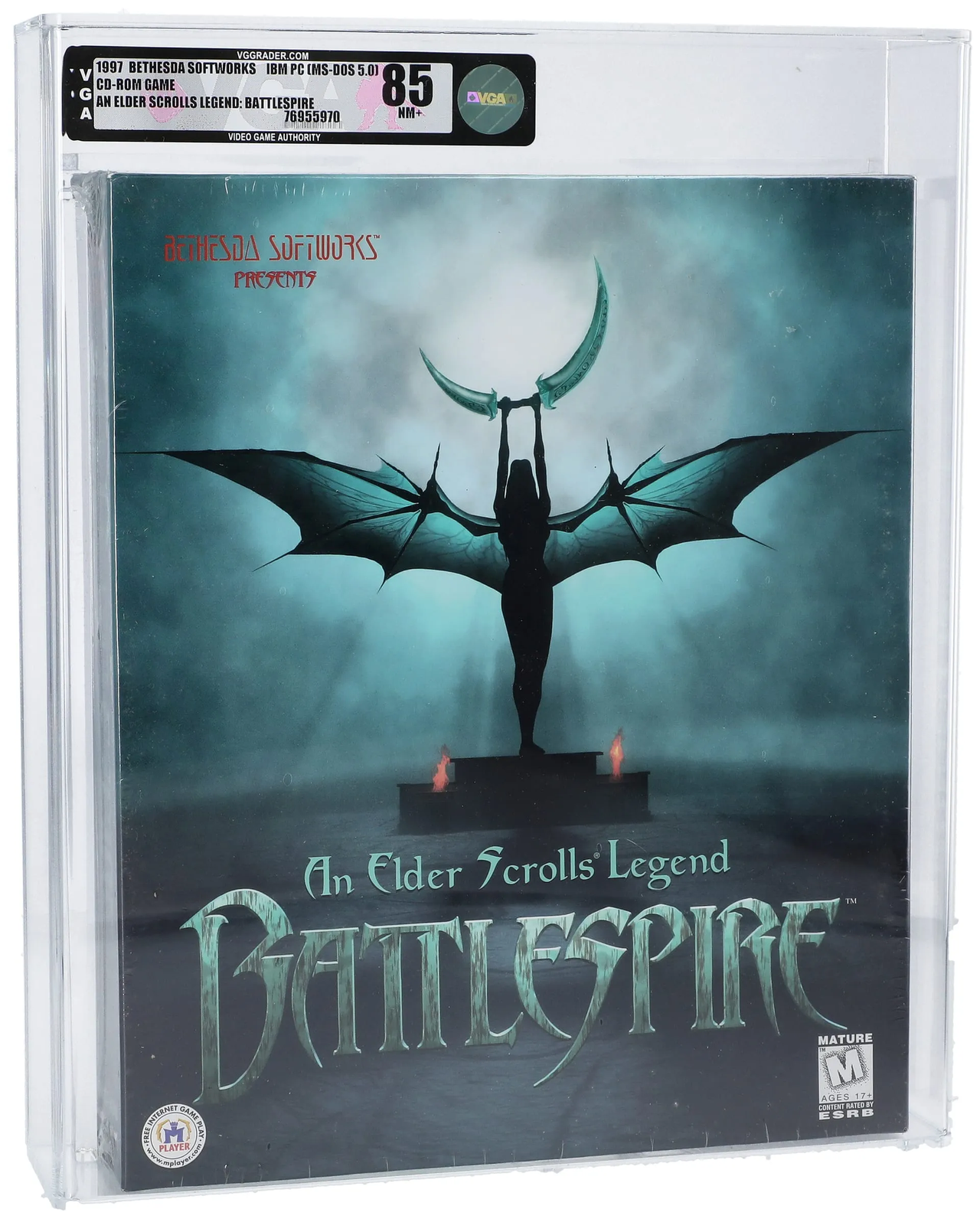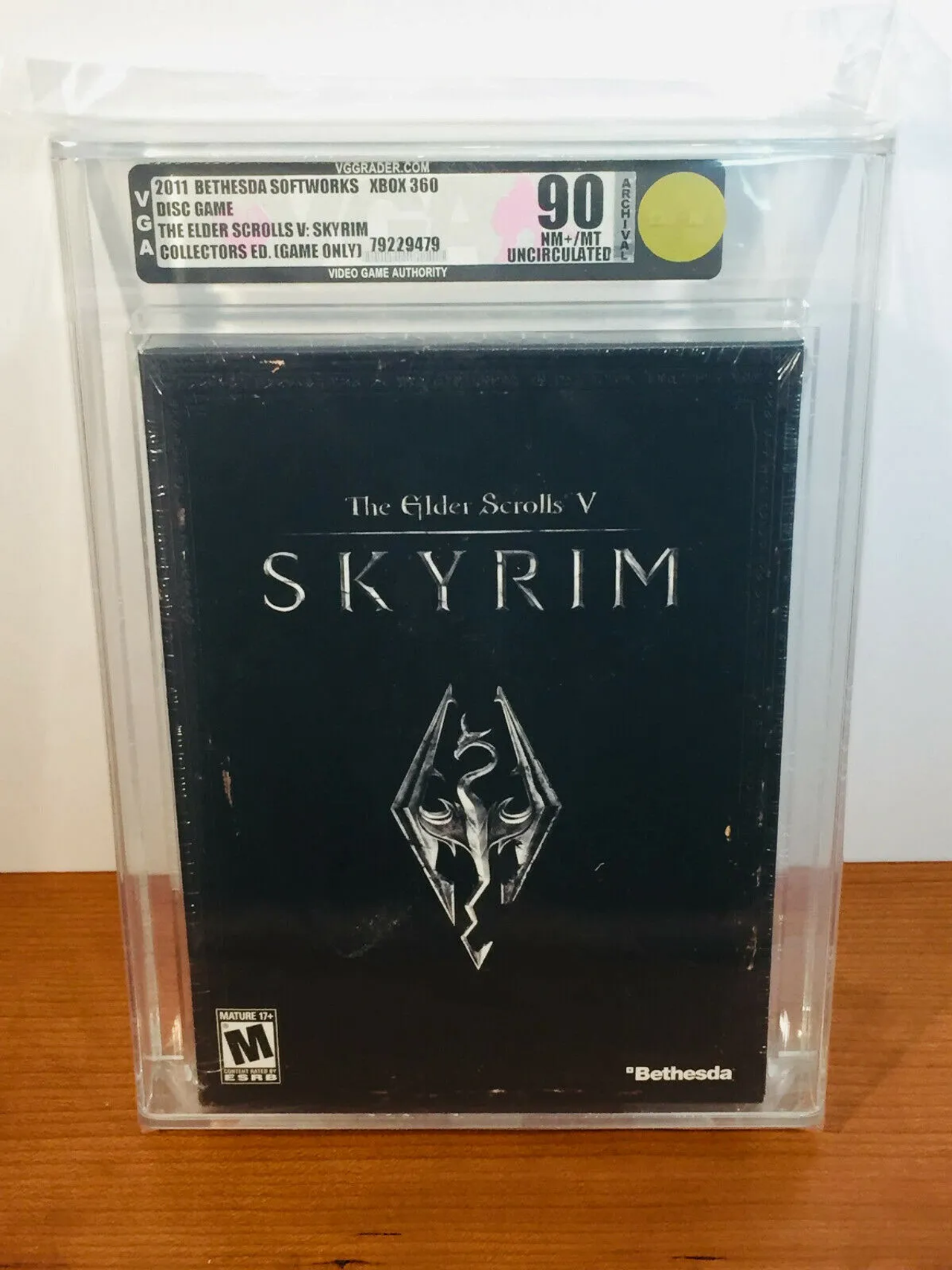The Elder Scrolls IV: Oblivion Remastered came out of almost nowhere a couple months ago, and met with huge acclaim. With plenty of new and returning fans getting back into The Elder Scrolls, and the ever-elusive Elder Scrolls VI presumably still in development, the series is set to remain a touchstone of gaming – and fertile ground for collectors.
The Classic Games
The Elder Scrolls began in 1994 with The Elder Scrolls: Arena. The plot was a grand dark fantasy adventure, seeing the player as a prisoner who allies with a fading ghost to stop the reign of Jagar Tharn, a battlemage who has usurped the Imperial throne through magical impersonation.
What Arena lacked in polish and mechanical depth, it made up for in sheer ambition and scale. The developers were less concerned with making a traditional game than with simulating a world – the manual even suggests that the main story is only one way of playing the game, and the player should feel free to instead explore the vast cities and wilderness of Tamriel. Though much of it was barebones, the vision of something spectacular was clear.
Copies are rare, especially ones in good condition – a sealed copy of Arena graded 80 VGA sold for $1,250 in November, 2024. There was also a deluxe edition that sells for even higher prices.
1996’s Daggerfall took Arena’s vision and brought it to life. Giving players an entire world map the size of the British Isles to explore, the game took place in the Iliac Bay, consisting of the provinces of High Rock and northern parts of Hammerfell. While the game offered a rich story involving political intrigue, a tormented spirit, and a weapon of mass destruction from outer space, players were once again invited to carve out any path they wanted for themselves – and, unlike in Arena, Daggerfall really did support it. Even if the game’s ambition was once again too lofty for it to fully realise, to this day, there’s never been anything else quite like it.
Complete-in-box, unsealed copies of Daggerfall can go for hundreds of dollars, while a high-quality sealed and graded copy can go for around $2,000.
Spin-Off Games
An Elder Scrolls Legend: Battlespire was a spin-off game released in 1997. Unlike the main games in the series, Battlespire consisted not of a world map to explore but instead offered a focused action-adventure. The story takes place on the titular Battlespire, a magical floating fortress outside the planet Nirn. The player is trapped aboard when Daedric forces invade, leading to an outer-space adventure that involves a lot of sneaking, fighting, and even allying with Daedra. Taking cues from Ultima Underworld, Battlespire allowed the player to enter conversation with almost any enemy NPC, sometimes thus avoiding combat entirely.
While Battlespire copies are less valuable than those of the main games, a good-quality sealed box can still go for around $500.
The Elder Scrolls Adventures: Redguard was another spin-off, capitalizing on the success of Tomb Raider by offering a third person action adventure. Set in Tamriel’s pre-Arena past, the game follows the hero Cyrus as he joins his sister’s rebellion against the Imperial forces occupying the island of Stros M’Kai. While gameplay is clunky to say the least, the game’s story and world are just as exciting, imaginative, and unusual as the other 90s Elder Scrolls games. Sealed, graded, decent-quality copies of Redguard go for similar prices to Battlespire. A VGA-graded 85+ copy went for $540 in May 2025.
Bethesda Captures the Console Market
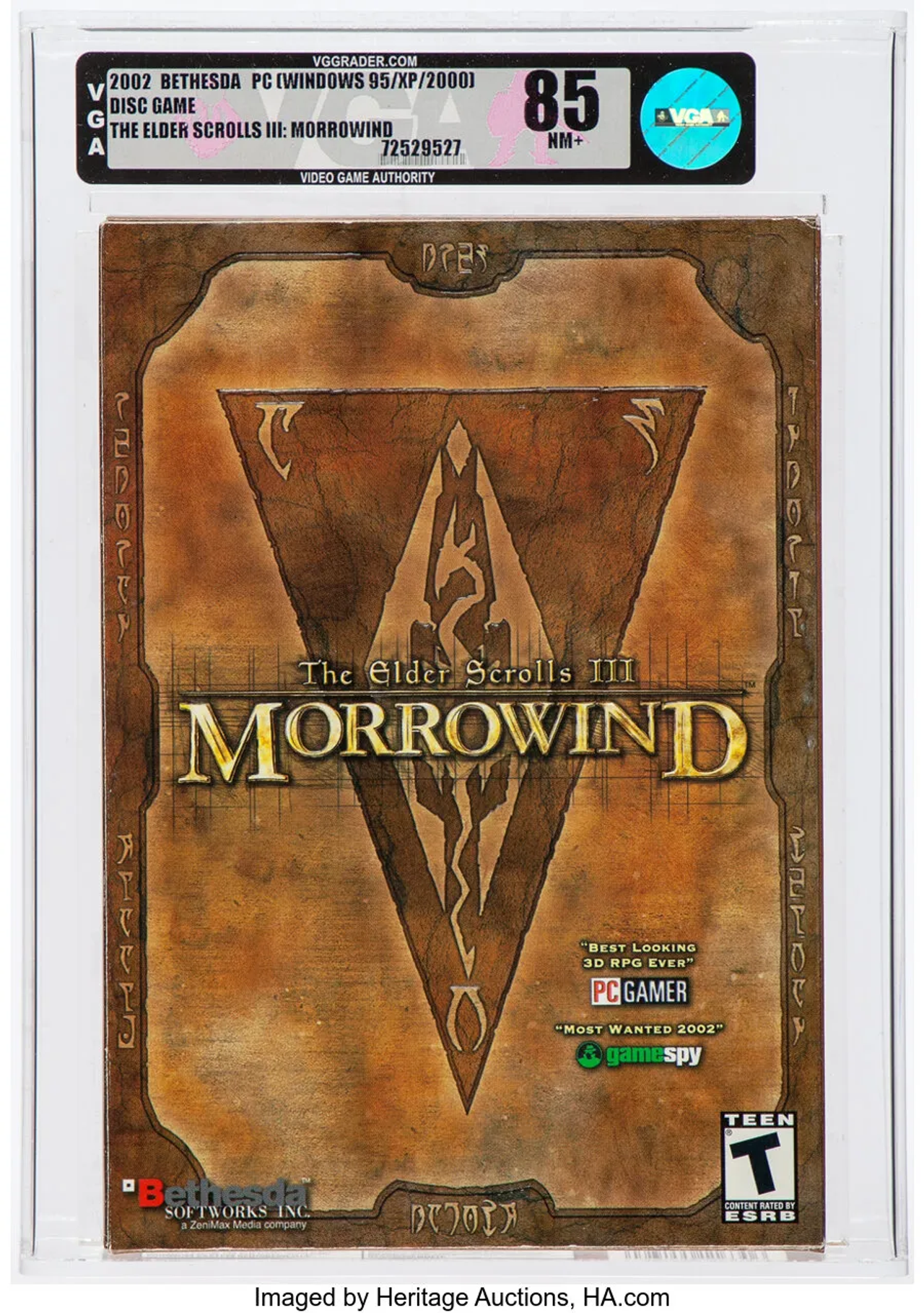
Morrowind’s popularity meant that countless copies were produced, and therefore only sealed and graded copies carry much value. Most go for a couple hundred dollars, but a copy with a very high grade, such as 9.8, may go for around $2,000, as happened with a 9.8-graded copy in late 2024.
Oblivion and Skyrim
Hot on Morrowind’s success, a sequel was inevitable, and in 2006 The Elder Scrolls IV: Oblivion hit shelves. The game was once again a huge success, but the fanbase started to become strained – some fans of the earlier games found it to be a step down, and the setting seemed to be more interested in capitalizing on the success of the Lord of the Rings films rather than bringing the exotic, eerie nature of Tamriel to the forefront. Nevertheless, the game was a commercial and critical hit, and for many fans, the slightly awkward-looking NPC models, infamously erratic AI, and absurd level scaling (bandits in Daedric armor!) just added to the fun.
A few different versions of Oblivion were produced – a Collector’s Edition and a Game of the Year edition alongside the original release – but all are worth a few hundred dollars today, if sealed and graded.
The Elder Scrolls V: Skyrim was released in 2011. By this point, Bethesda had become a titan of the gaming industry – on top of the success of The Elder Scrolls, their 2008 game Fallout 3 had managed to revive the classic 90s RPG series in a whole new format, and met with incredible success (even if fans were once again divided on how well Bethesda preserved what worked about the original Fallout).
Skyrim quickly became one of the best-selling games of all time. Bethesda made the bold choice to remove many of the series’ vestigial RPG mechanics – a controversial approach, but one that perhaps made sense given how far the series had drifted from its original design. The result was a game that was instantly accessible to just about any player, with simple but well-designed gameplay. Course correcting from Oblivion, Skyrim also tried to bring back a bit of Tamriel’s earlier strangeness (even if it’s still a long way from Battlespire).
Skyrim’s success – and the almost comical amount of times it has been re-released – means that copies are common. Even a sealed, 9.8 graded copy from the original 2011 release is worth only a few hundred dollars, so collectors may wish to hang onto their copies for some more years before considering a sale.
The Elder Scrolls VI…?
A lot has changed in the gaming world since the release of Skyrim in 2011. For The Elder Scrolls VI to have anywhere near the impact that the previous games had, Bethesda will have to come up with something truly special and groundbreaking.
The gaming world has also shifted to digital distribution, so many physical copies of The Elder Scrolls VI are likely to be special collector’s editions – worth keeping an eye out for.
